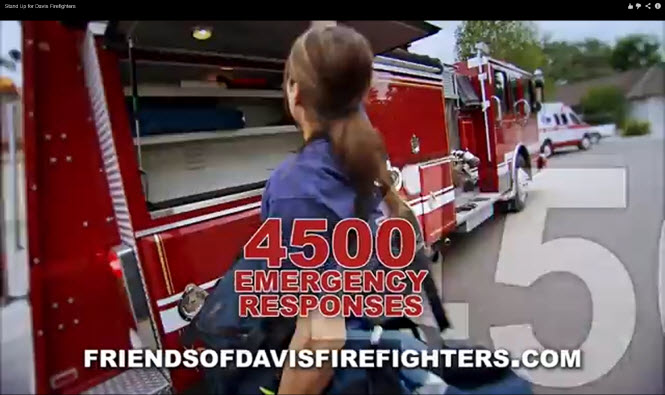
At Tuesday night’s Davis City Council meeting, the firefighters’ union President Bobby Weist and two other firefighters came forward to speak about their vote of no confidence against Landy Black and Steve Pierce, who have been acting as interim chiefs for the fire department as the city continues to restructure staffing and other operations.
During the course of his talk, Mr. Weist discussed his concerns about boundary drop.
“There’s a lot of changes as the city manager just mentioned. I believe it’s phase II of the boundary drop,” Mr. Weist said. “When I was on that committee – the boundary drops are going to be boundary drops. Now apparently they’ve changed. They were going to be true boundary drops, that the university would be responding into that area and taking those calls. Now I guess they are taking second calls, it’s basically what we’ve been doing for the most part for a long time. “
However, Mr. Weist appears to be mistaken in his understanding of the changes and what the boundary drop entails.
The city of Davis provided the Vanguard with an email from Division Chief Paul Swanson about the second phase of boundary drop. Phase I was implemented back in January or February, and it simply added Station 34 (the UC Davis fire station) to the response calls.
According to Division Chief Swanson’s email, “Phase 2 consists of the reordering of response units, beyond the primary response unit to each district to provide the closest unit for dispatch regardless of jurisdiction.”
Mr. Weist seemed to have only read a single sentence where Mr. Swanson indicated that “this will not affect the first-in unit for any district.”
The reason for that is relatively straightforward.
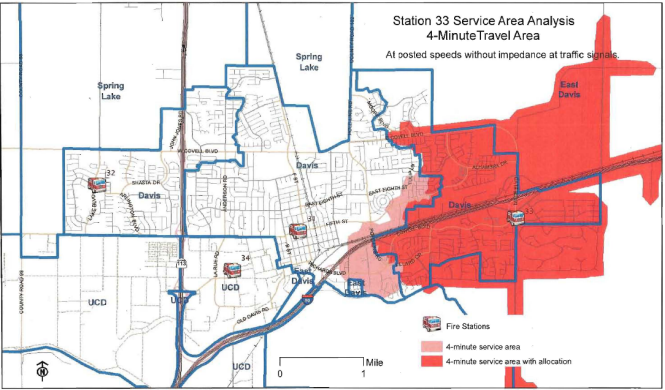
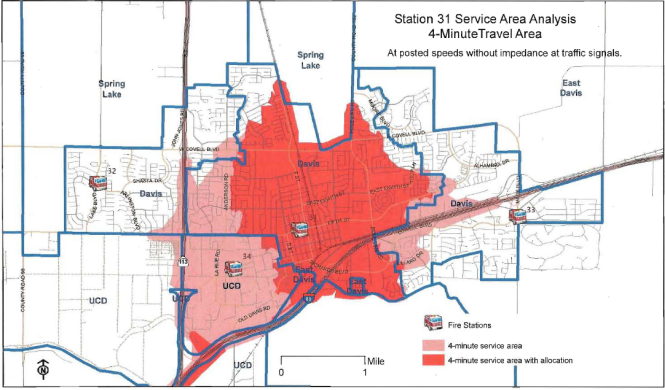
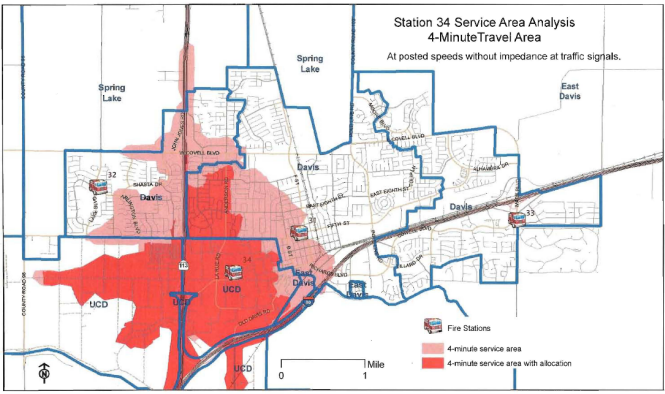
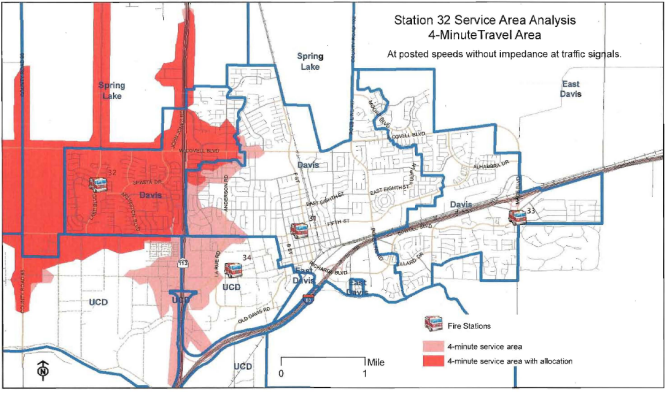
The bright red for each map is the area in which that station can respond faster than anyone else. The pink is the four-minute travel time zone.
As we noted last spring, the relative close proximity of Station 34 to Station 31 means that much of their areas in the city overlap. There are two small areas in the city where Station 34 can get there in slightly less time than Station 31 – but the areas are small and the difference in time is literally 10 to 15 seconds.
Other than that, the boundary lines for the first-in unit are roughly the same as they were before.
Back in July, the city council approved the exploration for moving Station 31 from its present 5th and E location northward. That process is expected to take around two years. At that point, it makes sense to redraw the first-in response maps. But the city reasons, why make small changes now that will become superfluous in a few years? So, basically, on a fire call, whoever gets to those locations first, gets there first.
That is not to say that there are no big changes here.
Writes Mr. Swanson, “You will notice some changes in dispatch tones as the all-call (move-up) tones will be used less frequently. Move-ups will now only occur when engines 31 and 34 are unavailable in addition to one of the outlying stations” (emphasis added).
This is in fact the major change here. Previously, every time that Station 31 was on a call, one of the outlying stations had to come into the Central Fire Station in order to cover the heart of the city. Now that does not have to happen because Station 34 is place to handle those simultaneous calls.
That means that Station 32 and Station 33 will remain in their stations more often, and east and west Davis will have far faster response times on average than they had prior to the boundary drop.
So, yes it is true that the first-in units are not changing at this time, but that is simply due to the fact that Station 31 and Station 34 are close enough that only two small areas were impacted, and by a matter of 10 seconds in one place and 15 seconds in another place.
Once Station 31 relocates to Covell Blvd, then Station 34 will have first-in response to portions of Central Davis, while Station 31’s coverage will shift to the north and will make sure that the portions of Davis not currently within the four-minute travel time boundaries receive faster coverage.
In the meantime, residents in eastern and western portions of the city will have more reliable service as their areas will be covered far more frequently by their fire stations.
—David M. Greenwald reporting






Bobby Weist has made two recent appearances before the city council. Both times, he made charges about the safety of the city and its firefighters. Both times, his comments reflected an unusual ignorance of reality and/or unacceptble, intentional misrepresentations.
He must be an embarassment of committed Davis firefighters, and he’s dragging our fire department into a suprising level of disrepute.
David: fascinating article on the boundaries of the stations.
Even though I thought I was paying close attention to the fire station and staffing issues, I have to say that the policy of simply engaging the UCD fire station in city calls and reaping the huge benefits from that simple change in policy was completely, absolutely off the radar of the CC. No staff member that I can recall ever made that simple suggestion. I had no idea that using the ICD fire crews for city responses was an available option to cut costs and increase public safety.
Such was the power of the FF Union in those days, before David Greenwald and the Vanguard got involved and taught the public about the issues concerning fire staffing and compensation.
Failure to make this happen years ago is city malfeasance of the highest order.
David, can you please add two more graphics to the article, specifically the area of the City that is currently “underserved” (doesn’t get 4 minute response) and the area of the City that is “underserved” with the boundary drop in place.
Thank you.
David wrote:
[quote]Previously, every time that Station 31 was on a call, one of the outlying stations had to come into the Central Fire Station in order to cover the heart of the city.[/quote]
This is wrong. E31 and another station (32 or 33) had to be on a call in order for a move up of the engine that was not on a call.
I think the biggest issue of moving station 31 out of the core is the fact that this is where majority of the calls are and majority of the money is. With that move a significant increase in response time to the core will occur.
Why wouldn’t they move Station 34 to the North? Based off your maps it looks like 31 and 32 can cover campus. This would keep station 31 in the core of the city.
Birdman you may have it wrong. I believe the intent of moving 31 to the north is that the new station would still cover the eastern half of 31’s current response area. In addition the new station would cover some of the areas outside of the four minute response area. The current downtown response area would essentially be covered by 31 and 34. This scenario would put more of the City and University within reach of a four minute response.
Birdman: I suggest you take that up with Paul Swanson.